Speaker wire gauge is crucial for audio quality‚ affecting resistance and signal loss․ Choosing the right gauge ensures optimal performance and clear sound reproduction in any setup․
What is Speaker Wire Gauge?
Speaker wire gauge refers to the thickness of the wire‚ measured using the American Wire Gauge (AWG) system․ A lower gauge number indicates a thicker wire‚ which offers less resistance and better signal transmission․ Common gauges for speaker wire include 12AWG‚ 14AWG‚ 16AWG‚ and 18AWG․ Thicker wires (lower gauges) are ideal for longer runs or higher power systems‚ while thinner wires (higher gauges) are suitable for shorter distances․ The gauge determines how much resistance the wire introduces‚ impacting audio quality and amplifier performance․ Choosing the right gauge ensures optimal sound reproduction and efficient power transfer from the amplifier to the speakers․
Why Speaker Wire Gauge Matters for Audio Quality
Speaker wire gauge significantly impacts audio quality by affecting resistance and signal loss․ Thicker wires (lower gauges) reduce resistance‚ minimizing signal degradation over long distances․ Higher resistance in thinner wires can lead to power loss‚ distorting sound and reducing volume․ Proper gauge selection ensures efficient power transfer from the amplifier to speakers‚ preserving dynamic range and frequency response․ For optimal performance‚ the wire’s resistance should be less than 5% of the speaker’s impedance․ Using the right gauge enhances clarity‚ bass response‚ and overall listening experience‚ making it essential for achieving high-fidelity sound in home theaters or stereo systems․
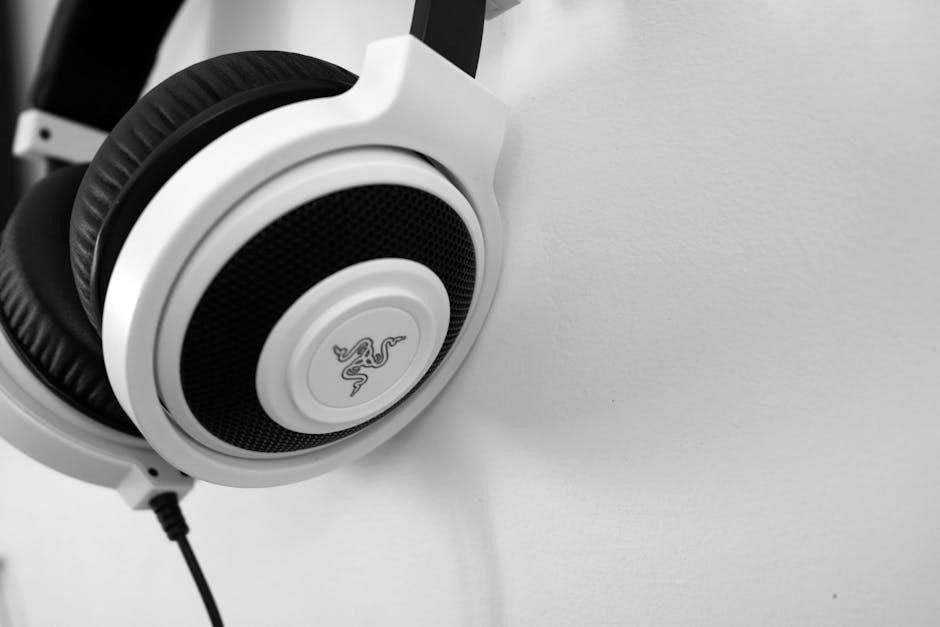
Understanding the American Wire Gauge (AWG) System
The AWG system measures wire thickness‚ with lower gauges indicating thicker wires and less resistance․ It helps determine the appropriate wire size for optimal audio performance․
How AWG Works
The American Wire Gauge (AWG) system measures wire thickness‚ with lower numbers indicating thicker wires and higher numbers indicating thinner wires․ It follows a logarithmic scale‚ where each gauge is approximately 1․122 times thicker than the next higher gauge․ This system helps determine the wire’s resistance‚ current-carrying capacity‚ and suitability for specific applications․ Thicker wires (lower gauges) have less resistance‚ making them ideal for longer runs or higher power systems․ The AWG system is widely used to ensure proper wire selection for audio systems‚ balancing factors like resistance‚ signal loss‚ and overall performance․ Understanding AWG is key to choosing the right wire for optimal sound quality․
Common Speaker Wire Gauges (12AWG‚ 14AWG‚ 16AWG‚ 18AWG)
Common speaker wire gauges include 12AWG‚ 14AWG‚ 16AWG‚ and 18AWG․ Thicker wires like 12AWG and 14AWG are suitable for longer distances and higher power systems‚ minimizing resistance and signal loss․ 16AWG and 18AWG are thinner‚ ideal for shorter runs in home theaters or stereo systems․ Each gauge balances resistance and flexibility‚ ensuring optimal audio quality․ Choosing the right gauge depends on the system’s power‚ speaker impedance‚ and wire length․ Proper selection enhances sound clarity and prevents performance issues‚ making these gauges versatile for various audio setups and requirements․
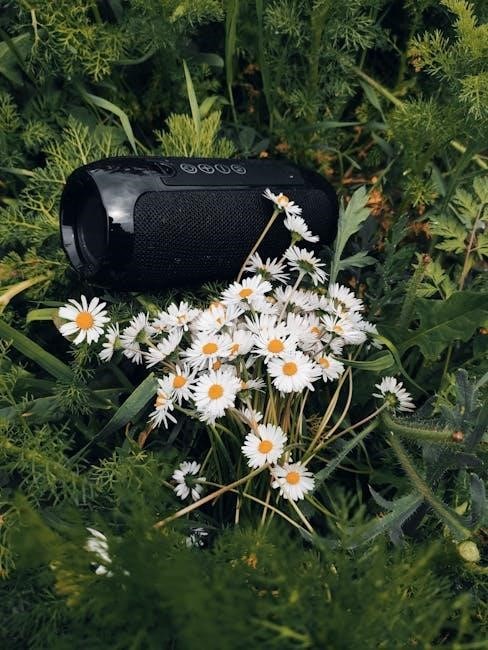
Factors Influencing Speaker Wire Gauge Selection
Speaker impedance‚ wire length‚ and power handling are key factors․ Lower impedance and longer distances require thicker gauges to minimize resistance and ensure optimal audio performance․
Speaker Impedance and Its Impact on Wire Gauge
Speaker impedance‚ typically 4‚ 8‚ or 16 ohms‚ directly influences wire gauge selection․ Lower impedance systems require thicker wires to reduce resistance and ensure efficient power transfer․ For example‚ an 8-ohm speaker system benefits from a 14AWG wire for minimal signal loss‚ while a 4-ohm system may need a 12AWG wire․ Using too thin a wire with low-impedance speakers can lead to power loss and reduced audio quality․ Matching the wire gauge to impedance ensures optimal performance and prevents overheating or distortion․ Always consult a speaker wire gauge chart to determine the best size for your system’s specifications․
Distance and Wire Length Considerations
Distance plays a critical role in selecting the appropriate speaker wire gauge․ Longer wire runs increase resistance‚ leading to signal loss and reduced audio quality․ For shorter distances (under 50 feet)‚ a 16AWG wire is often sufficient․ However‚ for longer runs‚ a thicker gauge like 14AWG or 12AWG is recommended to minimize resistance and ensure reliable signal transmission․ The American Wire Gauge (AWG) system provides guidelines for maximum wire length based on gauge and impedance․ Always consider the total round-trip distance when selecting wire to maintain optimal audio performance and avoid potential signal degradation over extended lengths․
Power Handling and System Requirements
Power handling and system requirements are essential when selecting speaker wire․ Thicker wires (lower gauges) can handle more power with less resistance‚ ensuring reliable performance․ For high-power systems‚ 12AWG or 14AWG wires are ideal‚ as they minimize resistance and signal loss․ For lower-power setups‚ 16AWG or 18AWG may suffice․ Always match the wire gauge to your amplifier’s output and speaker impedance to avoid overheating or signal degradation․ Consider the total power your system will deliver and ensure the wire can handle it without compromising audio quality․ Consulting a wire gauge calculator can help determine the optimal choice for your specific setup․
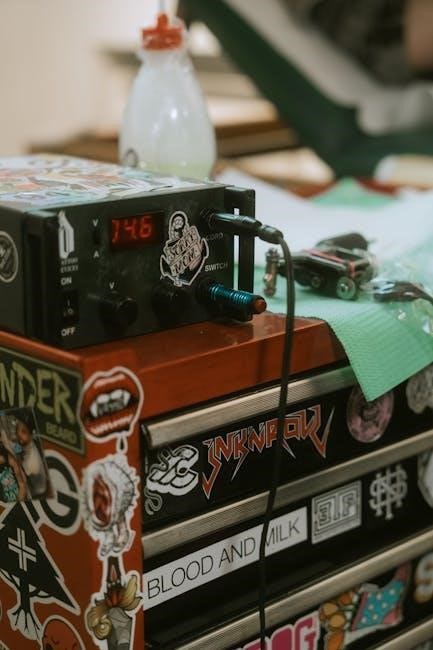
Speaker Wire Gauge Chart and Compatibility
Speaker wire gauge charts help determine compatibility based on speaker impedance and wire length․ Lower gauges like 12AWG reduce resistance and signal loss for optimal audio quality․
Speaker Wire Gauge vs․ Speaker Impedance Chart
A speaker wire gauge vs․ impedance chart helps match wire thickness to speaker impedance․ For 8-ohm speakers‚ a 14AWG wire is ideal for runs up to 50 feet․ Lower impedance systems (4 ohms) require thicker wires (12AWG or lower) to minimize resistance․ The chart provides maximum lengths for each gauge based on impedance‚ ensuring optimal audio quality․ For example‚ 16AWG wire works well for short runs with 8-ohm speakers‚ while 10AWG is better for longer distances or lower impedance systems․ Using the right gauge ensures minimal signal loss and clear sound reproduction‚ making compatibility a key factor in system performance․
Maximum Length Recommendations for Each Gauge
Speaker wire gauge determines the maximum length for optimal performance․ For 8-ohm systems‚ 12AWG wire can handle up to 100 feet‚ while 14AWG is suitable for 75 feet․ Thinner wires like 16AWG work best for shorter runs (up to 50 feet)‚ and 18AWG is ideal for 30 feet or less․ Exceeding these lengths can lead to signal loss and increased resistance‚ degrading audio quality․ Always choose a gauge that allows the wire to stay within its recommended maximum length for your system’s impedance․ This ensures clear sound reproduction and minimizes potential performance issues in your setup․

Choosing the Right Speaker Wire Gauge
Selecting the correct speaker wire gauge balances audio quality‚ system impedance‚ and cable length․ Thicker wires reduce resistance‚ ensuring clear sound‚ while longer runs may require lower gauges for optimal performance․
Step-by-Step Guide to Selecting the Optimal Gauge
To select the optimal speaker wire gauge‚ start by determining your speaker’s impedance and the distance the wire will run․ Lower impedance systems (e․g․‚ 4 ohms) require thicker wires to minimize resistance․ For longer distances‚ use a lower AWG (thicker wire) to reduce signal loss․ For example‚ 16AWG is suitable for runs under 50 feet‚ while 14AWG is better for longer distances․ Consider your system’s power handling; higher power systems benefit from thicker wires․ Use a speaker wire gauge chart or calculator to verify your selection․ Finally‚ ensure compatibility with your equipment to maintain sound quality and system performance․
Speaker Wire Gauge Calculator and Tools
Speaker wire gauge calculators and tools simplify the process of selecting the optimal wire size for your audio system․ These tools calculate resistance‚ damping factor‚ and signal loss based on your speaker’s impedance‚ power requirements‚ and wire length․ By inputting your system’s specifications‚ you can determine the ideal AWG for minimal signal degradation․ Many online calculators also provide charts and recommendations‚ ensuring compatibility with your setup․ For example‚ a 100W system with 8-ohm speakers and a 50-foot wire run might require a 12AWG or 14AWG wire․ These tools are essential for achieving the best sound quality and system performance‚ saving time and effort in the selection process․
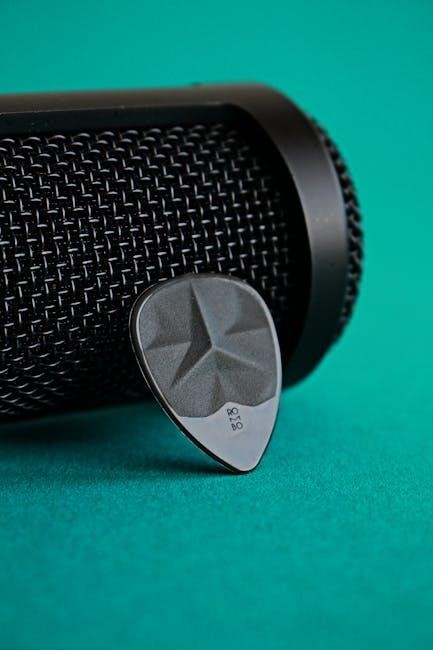
Speaker Wire Materials and Construction
Speaker wire materials like copper offer high conductivity‚ minimizing resistance․ Stranded wires provide flexibility‚ while solid core ensures durability․ Choosing the right construction enhances sound quality and system longevity․
Copper vs․ Other Materials for Speaker Wire
Copper is the most common material for speaker wire due to its high conductivity‚ minimizing signal loss and resistance․ Other materials like silver offer superior conductivity but are costly․ Aluminum is less conductive‚ leading to higher resistance and potential sound degradation․ Copper’s balanced performance and affordability make it the preferred choice for most audio systems; For high-fidelity setups‚ copper remains the best option‚ while budget-friendly systems may opt for alternative materials․ Ultimately‚ material selection impacts sound quality‚ with copper being the gold standard for optimal audio performance across various applications․
Stranded vs․ Solid Core Wire: Pros and Cons
Stranded wire‚ made of multiple thin wires‚ offers flexibility and ease of installation‚ reducing breakage risk․ It’s ideal for complex setups and long runs․ Solid core wire‚ being a single thick conductor‚ is rigid but provides lower resistance․ However‚ it’s prone to damage and less suitable for bending․ Stranded wire is preferred for most audio systems due to its durability and versatility‚ while solid core is better for permanent installations where flexibility isn’t needed․ Each type has its strengths‚ and the choice depends on specific installation requirements and system demands for optimal performance and longevity․
Installation Best Practices
Plan your wire layout to minimize interference and signal loss․ Secure wires neatly‚ avoiding power cables․ Test connections before finalizing to ensure optimal performance and reliability․
How to Measure and Cut Speaker Wire
To measure speaker wire accurately‚ calculate the distance between your amplifier and speakers‚ adding a few extra inches for flexibility․ Use a reliable measuring tape for precise lengths․ When cutting‚ use high-quality wire cutters to ensure clean‚ straight cuts․ Avoid twisting or stretching the wire‚ as this can damage the conductors․ For stranded wire‚ consider twisting the strands gently before cutting to maintain integrity․ After cutting‚ strip the insulation carefully using wire strippers‚ exposing just enough conductor for connections․ Proper measuring and cutting ensure reliable connections and optimal audio performance‚ minimizing signal loss and interference․
Proper Wire Stripping and Connection Techniques
Properly stripping and connecting speaker wire is essential for reliable performance․ Use wire strippers to carefully remove insulation without damaging the conductor․ For stranded wire‚ gently twist the strands before stripping to prevent loose ends․ When connecting‚ ensure the wire is securely attached to terminals or connectors‚ avoiding loose connections that can cause interference․ Use soldering for permanent installations or high-quality connectors for flexibility․ Avoid over-stripping‚ as this can weaken the wire․ Secure all connections tightly to maintain signal integrity and prevent degradation over time․ Proper techniques ensure clear audio transmission and minimize the risk of signal loss or distortion;

Troubleshooting Speaker Wire Issues
Common issues include signal loss‚ interference‚ or no sound․ Check connections‚ inspect for damage‚ and ensure proper gauge for your system․ Use a multimeter to test continuity and resistance‚ avoiding overheating or voltage mismatches․
Common Problems and Solutions
Common issues with speaker wire include signal loss‚ interference‚ and no sound․ Check connections for tightness and inspect for damage or frays․ Ensure the correct gauge is used․ A multimeter can test for continuity and resistance․ Overheating or voltage mismatches may occur if the wire is too thin․ For interference‚ shielded cables can help․ Replacing damaged sections or upgrading to a heavier gauge often resolves issues․ Always verify compatibility with your system’s impedance and power requirements to maintain optimal performance and avoid potential damage to equipment․
Testing Speaker Wire for Continuity and Resistance
Testing speaker wire for continuity and resistance ensures proper functionality․ Use a multimeter to check for continuity by touching the probes to both ends of the wire; a beep confirms a good connection․ Measure resistance in ohms‚ ensuring it aligns with your system’s impedance․ Low resistance is ideal for clear audio․ If resistance is too high‚ signal loss may occur․ Also‚ test for short circuits by measuring resistance between wires when disconnected․ A low or zero reading indicates a short․ Regular testing prevents issues and ensures optimal performance‚ maintaining sound quality and system reliability over time․

Advanced Topics in Speaker Wire Configuration
Advanced speaker wire configurations like series‚ parallel‚ bi-wiring‚ and bi-amping require careful gauge selection to optimize performance and maintain sound quality across complex setups․
Series vs․ Parallel Wiring
Series wiring increases total impedance‚ while parallel wiring decreases it․ Thicker gauges like 12AWG or 14AWG are ideal for series setups to reduce resistance․ In parallel‚ thinner gauges like 16AWG suffice due to lower impedance․ Proper gauge selection ensures minimal signal loss and optimal power delivery‚ preserving audio fidelity․ Each configuration impacts system performance differently‚ so understanding impedance and gauge relationships is key for achieving desired sound quality and avoiding potential issues like underpowering or overheating․ Always consult charts and calculators to match wire gauge with your setup’s specific needs for the best results․
Bi-Wiring and Bi-Amping: Does Wire Gauge Matter?
Bi-wiring and bi-amping configurations aim to improve sound quality by separating high and low-frequency signals․ While wire gauge isn’t the primary factor here‚ using appropriate gauges ensures minimal resistance and signal integrity․ Thicker wires (lower gauges) like 12AWG or 14AWG can reduce resistance‚ but even 16AWG often suffices for these setups․ The key benefit comes from separating the signals‚ not the wire gauge itself․ Proper wire selection ensures optimal performance‚ but the focus remains on the separation of frequencies and amplifiers․ Choose wires that meet your system’s length and power requirements to maintain audio fidelity without overcomplicating the setup․

Future-Proofing Your Speaker Wire Installation
Use a lower gauge wire to accommodate future upgrades and longer runs․ Plan ahead for potential system expansions to ensure your setup remains flexible and efficient over time․
Upgrading Your System: When to Change Wire Gauge
When upgrading your audio system‚ consider changing the wire gauge if you’re increasing power output‚ adding more speakers‚ or extending wire runs beyond 50 feet․ A lower gauge (thicker wire) reduces resistance‚ ensuring better signal integrity and sound quality․ For example‚ if upgrading from 16AWG to 14AWG‚ you’ll experience less signal loss over longer distances․ This is especially important for high-fidelity systems or home theaters where clarity is paramount․ Planning ahead with a suitable gauge prevents future performance issues and ensures compatibility with new components‚ making your setup more robust and adaptable to future enhancements․
Planning for Future Expansion
Planning for future expansion involves selecting a wire gauge that accommodates potential upgrades‚ such as adding more speakers or increasing power․ Using a slightly thicker wire‚ like 14AWG instead of 16AWG‚ provides flexibility for future changes without needing to rewire․ Installing extra outlets or running longer wires now can save time and effort later․ This proactive approach ensures your system remains scalable and adaptable‚ avoiding the hassle of upgrading wiring down the line․ By considering future needs during the initial setup‚ you create a robust infrastructure that supports both current and future audio demands seamlessly․
Choosing the right speaker wire gauge ensures optimal audio quality․ Consider impedance‚ distance‚ and power needs․ Use a thicker gauge for longer runs to minimize resistance and signal loss effectively․
Speaker wire gauge plays a vital role in maintaining audio quality by minimizing resistance and signal loss․ Understanding the American Wire Gauge (AWG) system is essential‚ as lower gauges (thicker wires) reduce resistance‚ ideal for longer runs․ Common gauges like 12AWG‚ 14AWG‚ and 16AWG are popular for home systems․ Factors such as speaker impedance‚ distance‚ and power handling guide gauge selection․ Copper remains the top choice for its conductivity‚ and stranded wires are preferred for flexibility․ Proper installation techniques‚ like accurate measuring and stripping‚ ensure reliable connections․ Regular testing for continuity and resistance helps troubleshoot issues․ Planning for future upgrades and expansions ensures long-term optimal performance․ Always prioritize compatibility and system requirements for the best audio experience․

Final Recommendations for Optimal Performance
For optimal audio performance‚ select a speaker wire gauge that balances your system’s impedance‚ power requirements‚ and installation distance․ Thicker wires (lower gauges) are ideal for longer runs to minimize resistance and signal loss․ Prioritize high-quality materials‚ such as copper‚ for superior conductivity․ Always measure and cut wires accurately to avoid waste and ensure clean connections․ Use stranded wires for flexibility and solid cores for fixed installations․ Regularly test for continuity and resistance to identify potential issues early․ Future-proof your setup by planning for potential upgrades and expansions․ By adhering to these guidelines‚ you can achieve clear‚ distortion-free sound and maximize your audio system’s potential․
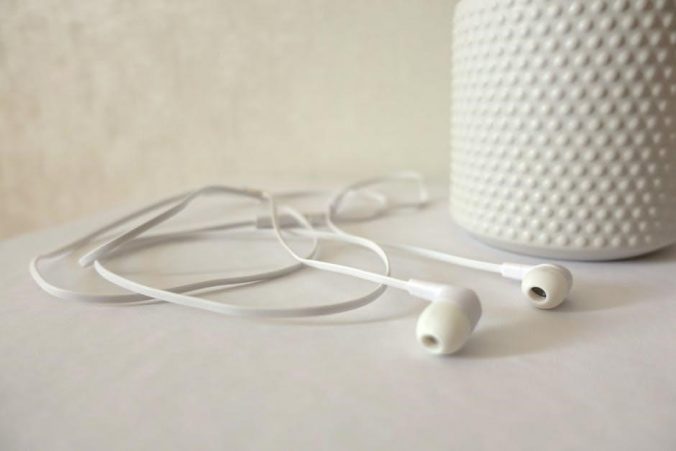
Leave a Reply
You must be logged in to post a comment.